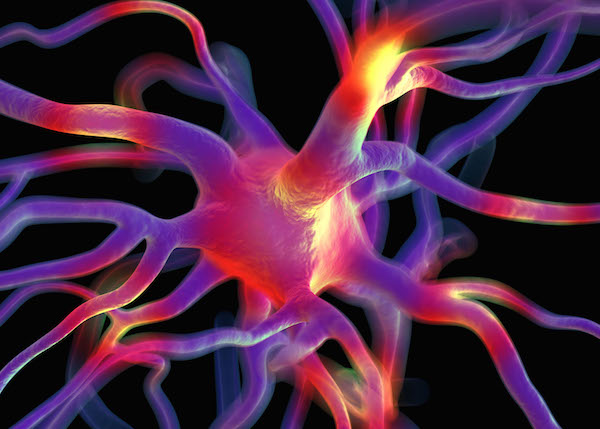
TUESDAY, Nov. 5 (HealthDay News) — Brain scans reveal that people with fibromyalgia are not as able to prepare for pain as healthy people, and they are less likely to respond to the promise of pain relief.
This altered brain processing could explain why people with the mysterious chronic ailment feel pain more intensely and don’t respond as well to narcotic painkillers, the researchers said. Their findings are published in the Nov. 5 issue of the journal Arthritis & Rheumatism.
People without fibromyalgia can mentally alleviate some types of pain that people experience, explained Dr. Lynn Webster, president of the American Academy of Pain Medicine. “For people with fibromyalgia, that capability seems to be dampened if not eliminated,” Webster said. “They may not be able to respond the same way to medications or our intrinsic [natural] mechanisms for dealing with pain.”
No one knows what causes fibromyalgia, which involves widespread joint and muscle pain. The disorder affects 3.4 percent of women and 0.5 percent of men in the United States, according to the study. Older women are most likely to suffer from fibromyalgia, which affects more than 7 percent of women aged 60 to 79.
Researchers conducted this study using 31 patients with fibromyalgia and 14 healthy people.
The study authors used an MRI to scan each participant’s brain as a blood pressure cuff painfully squeezed the patient’s calf, said study author Dr. Marco Loggia, from Massachusetts General Hospital and Harvard Medical School in Boston. Doctors tailored the pressure provided by the cuff so that everyone with or without fibromyalgia would rate their pain between 40 to 50 on a scale of 100.
“It gives a very deep, muscular type of pain,” Loggia said. “It’s closer to the clinical pain that a patient with fibromyalgia experiences.”
Patients also received a visual cue that told them when the cuff would begin squeezing their calf and when the cuff would release its grip, allowing researchers to see how the brain would respond to anticipation of both pain and relief.
As expected, the people with fibromyalgia needed much less pressure to reach the same pain rating as a healthy person, Loggia said.
But the doctors also noticed key differences in the way certain parts of their brain dealt with pain before, during and after.
One brain region that showed an altered response was the ventral tegmental area (VTA), a group of neurons in the center of the brain that responds to reward or punishment. The VTA helps regulate the release of dopamine, a pain-relieving brain chemical. It plays a crucial role in a person’s response to pain medications and has been linked to drug addiction.
“The VTA in healthy volunteers activated before pain and during pain, and the region deactivated when they received the relief signal. People were more worried about the pain to come and more rewarded by the cue that the pain would soon end,” Loggia said. “In people with fibromyalgia, we don’t see this. The activation is completely blunted.”
The altered response of the VTA also could explain why fibromyalgia patients often do not respond to narcotic painkillers, he added.
The investigators also noted a different response in the periaqueductal gray (PAG), a small structure in the center of the brain that plays a role in pain transition. “In animals, it has been shown that if you electrically stimulate this area, pain responses go down,” Loggia said.
The PAG activates in healthy people who have received a cue that pain is imminent, as they prepare themselves for the pain to come. But the region does not activate when people with fibromyalgia are warned of oncoming pain, suggesting that they are less capable of guarding against pain signals, Loggia said.
The study provides “another piece of evidence that in fibromyalgia something is fundamentally amiss, and this idea that it is a peripheral disorder is mistaken,” said Dr. John Kassel, a professor of neurology and director of the division of neuromuscular medicine at Ohio State University’s Werner Medical Center.
However, there are some drawbacks to the study and its conclusions.
Loggia noted that the altered brain activity could be explained away by the fact that fibromyalgia patients endure constant pain and the disorder has altered the brain response, instead of the other way around.
“The healthy volunteers go from a state of no pain to a state of pain,” he said. “But fibromyalgia patients go from a lower level of pain to a higher level of pain, which could affect the way they process the pain and relief cues.”
In addition, the researchers failed to compare the response of fibromyalgia patients to that of people with other chronic pain conditions, Kassel said.
“This may not be something caused by fibromyalgia,” he said. “It could be something that just happens in most chronic pain patients.”
More information
For more information on fibromyalgia, visit the U.S. National Library of Medicine.
Copyright © 2025 HealthDay. All rights reserved.

